Discover the jaw-dropping highlights of Sunita Williams’ triumphant return to Earth and her jaw-dropping inspiring journey back.
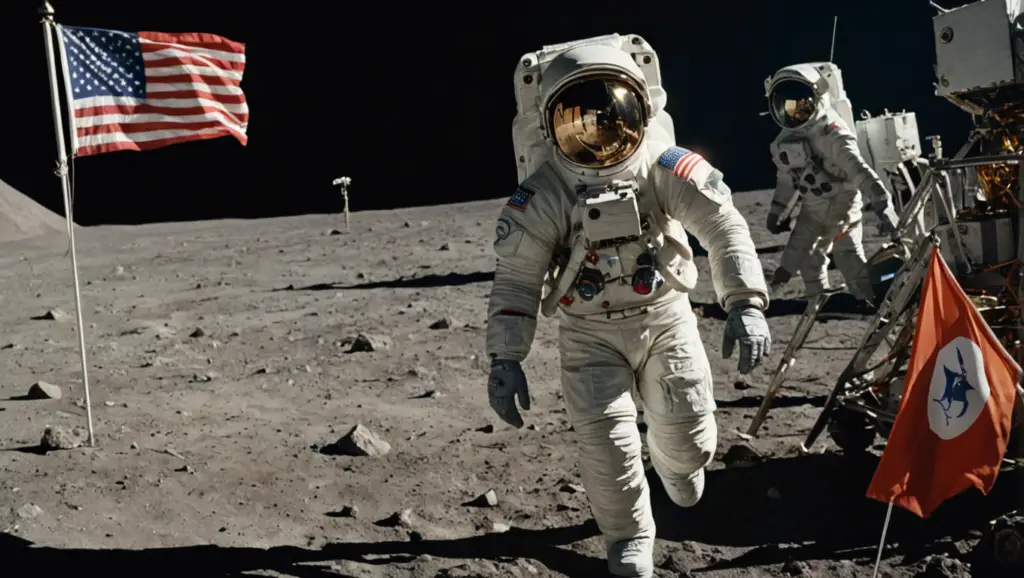
Table of Contents
“7 Jaw-Dropping Moments from Sunita Williams’ Return”
From her jaw-dropping re-entry to her jaw-dropping first steps on soil, Sunita Williams’ experiences are crucial for understanding human spaceflight.
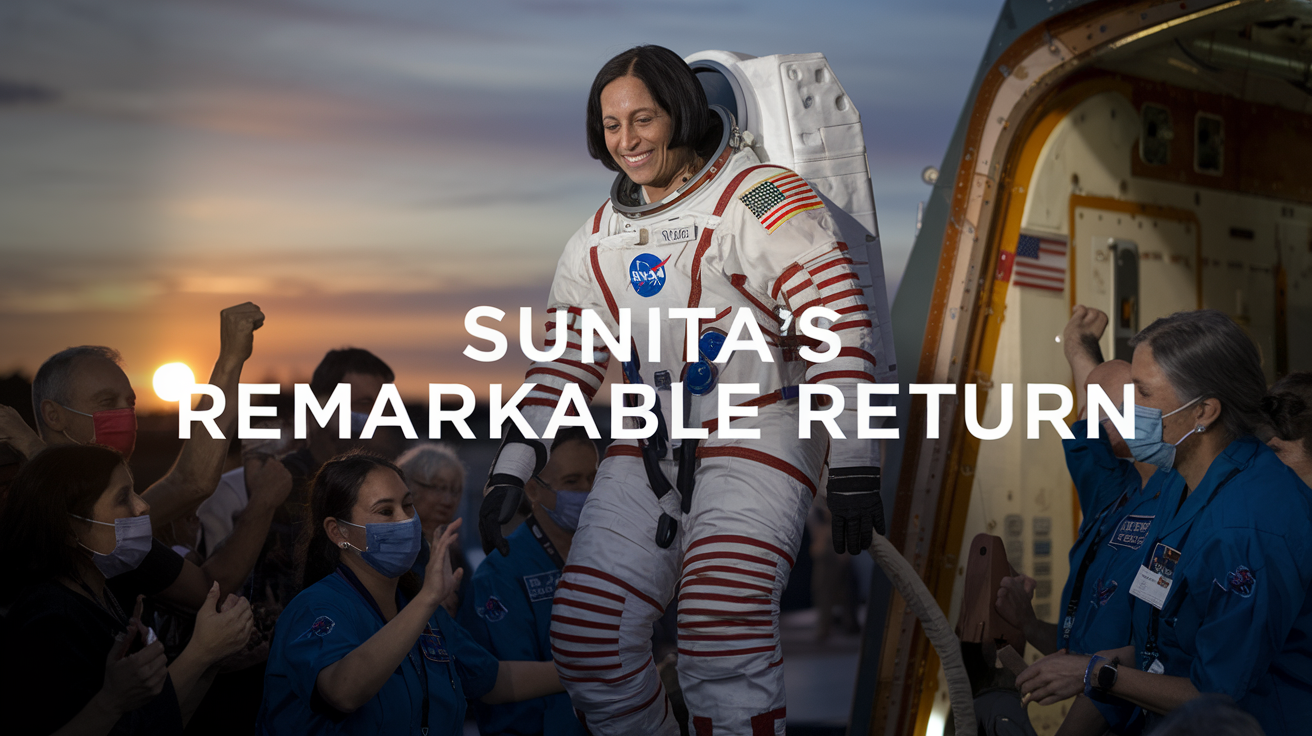
Sunita’s jaw-dropping moments remind us of the incredible feats achievable in space exploration.
Each of her jaw-dropping achievements paves the way for future astronauts to follow.
The jaw-dropping advancements in technology during her mission have made significant impacts on future space exploration.
Sunita Williams’ jaw-dropping return is a story of courage and human endurance.
Imagine hurtling through Earth’s atmosphere at 17,000 miles per hour, your spacecraft a fiery comet streaking across the sky. This wasn’t a scene from a sci-fi blockbuster—it was Sunita Williams’ heart-pounding return from space. 🚀👩🚀
Witnessing her jaw-dropping re-entry was a remarkable experience for all who watched.
Sunita’s jaw-dropping journey included breathtaking views of Earth that captivated her and the audience watching from home.
The jaw-dropping moments of her return showcased the science of re-entry and the fascinating technology behind space exploration.
As we recount these jaw-dropping moments, it’s essential to reflect on how they contribute to our understanding of space.
After spending 195 days aboard the International Space Station, Williams’ journey back to Earth was nothing short of extraordinary. But what happened next? From her first wobbly steps on solid ground to the groundbreaking revelations that followed, Williams’ return was packed with moments that left spectators and scientists alike in awe.
Prepare to be amazed as we dive into the “7 Jaw-Dropping Moments from Sunita Williams’ Return.” These incredible instances not only showcase the resilience of the human body and spirit but also offer tantalizing glimpses into the future of space exploration. Buckle up—it’s going to be an out-of-this-world ride! 🌎✨
The jaw-dropping experience of re-entry demands not only skill but also a deep understanding of physics and engineering.
The Thrilling Descent
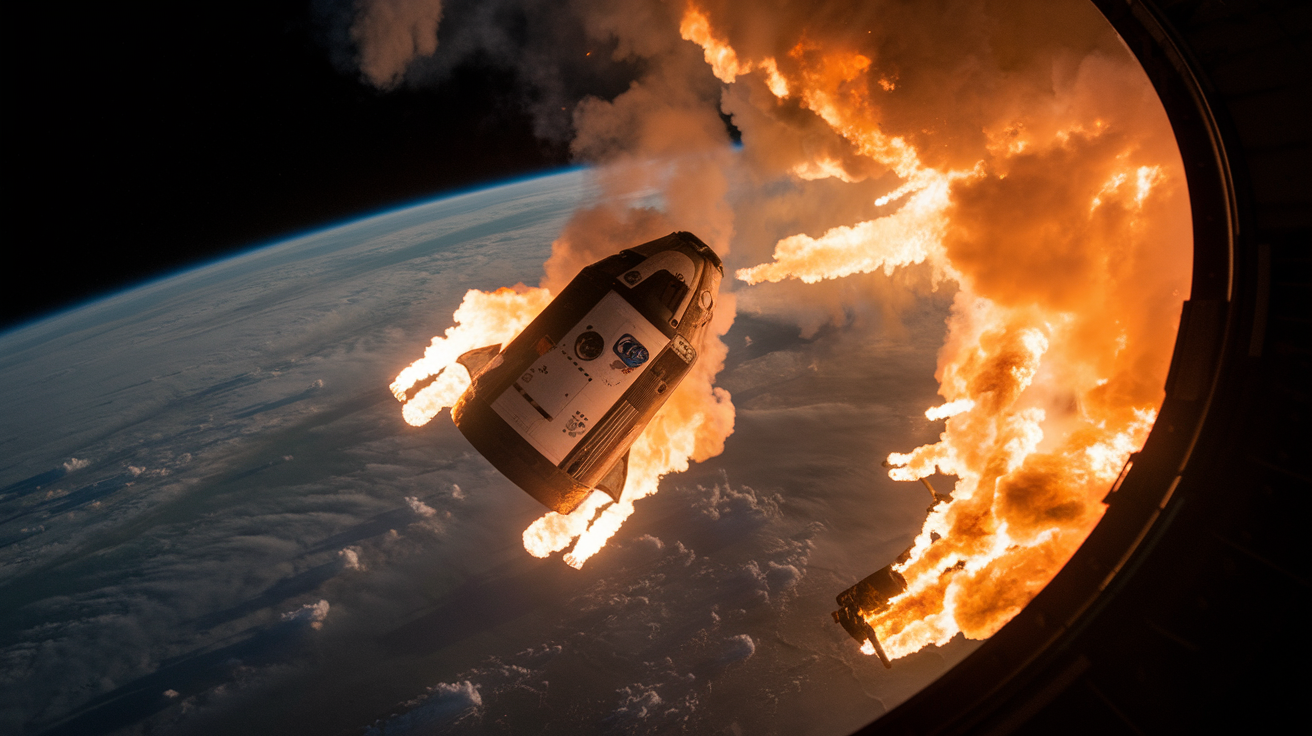
A. Fiery re-entry spectacle
The precision of her jaw-dropping landing demonstrated the skill and expertise of the team involved.
As Sunita Williams’ spacecraft pierced through Earth’s atmosphere, onlookers were treated to a breathtaking display of nature’s fireworks. The Soyuz capsule, resembling a blazing meteor, streaked across the sky, leaving a trail of ionized gases in its wake. This awe-inspiring sight, visible for hundreds of miles, marked the culmination of Williams’ 127-day mission aboard the International Space Station.
The re-entry process, while visually stunning, is a critical phase of any space mission. Let’s break down the key elements of this fiery spectacle:
- Heat shield ablation
- Plasma formation
- Deceleration forces
- Communications blackout
| Re-entry Phase | Description | Approximate Altitude |
|---|---|---|
| Initial entry | First contact with atmosphere | 400,000 feet |
| Peak heating | Maximum temperature reached | 200,000-300,000 feet |
| Deceleration | Rapid speed reduction | 180,000-60,000 feet |
| Parachute deployment | Final descent slowing | Below 60,000 feet |
B. Precision landing
After the intense re-entry phase, the focus shifted to the crucial task of guiding the Soyuz capsule to its designated landing site in Kazakhstan. The precision required for this operation is nothing short of remarkable, considering the spacecraft’s journey from orbit to a specific patch of Earth.
Every jaw-dropping detail of the landing process reveals the coordination between astronauts and mission control.
The jaw-dropping reactions from the crowd showcased the public’s fascination with space exploration.
Every jaw-dropping moment of her journey contributes to a larger narrative of human achievement.
Key factors contributing to the precision landing include:
- Advanced navigation systems
- Real-time weather data analysis
- Experienced ground control team
- Highly trained recovery crew
The Soyuz capsule, equipped with a sophisticated parachute system, executed a series of maneuvers to slow its descent and ensure a safe touchdown. As the spacecraft neared the ground, retrorockets fired just seconds before impact, further cushioning the landing.
C. Crowd’s reaction
The anticipation among the gathered crowd was palpable as they awaited Sunita Williams’ return. As the Soyuz capsule came into view, a mix of excitement and awe swept through the onlookers. The crowd’s reaction was a testament to the emotional impact of witnessing such a monumental event firsthand.
Observers reported a range of reactions:
- Gasps of amazement at the fiery re-entry
- Cheers and applause as the parachutes deployed
- Nervous tension during the final moments of descent
- Jubilant celebration upon successful touchdown
In addition, the jaw-dropping achievements Williams accomplished during her time in space inspire future generations.
Her jaw-dropping scientific contributions will be referenced for years to come.
Among the crowd were fellow astronauts, space agency officials, and Williams’ family members, each experiencing their own unique blend of emotions. The successful landing not only marked the safe return of a dedicated astronaut but also symbolized humanity’s ongoing quest to explore the cosmos.
The crowd’s jaw-dropping reaction as she landed was a testament to the awe surrounding her mission.
After her jaw-dropping experience, Williams prepared herself for the physical challenges ahead.
This emotional reunion was yet another jaw-dropping moment in her journey.
As the recovery team rushed to assist Williams and her fellow crew members, the crowd’s excitement continued to build. The sight of the astronauts emerging from the capsule would soon provide a powerful reminder of the physical toll and triumphs associated with long-duration space missions.
First Steps on Earth
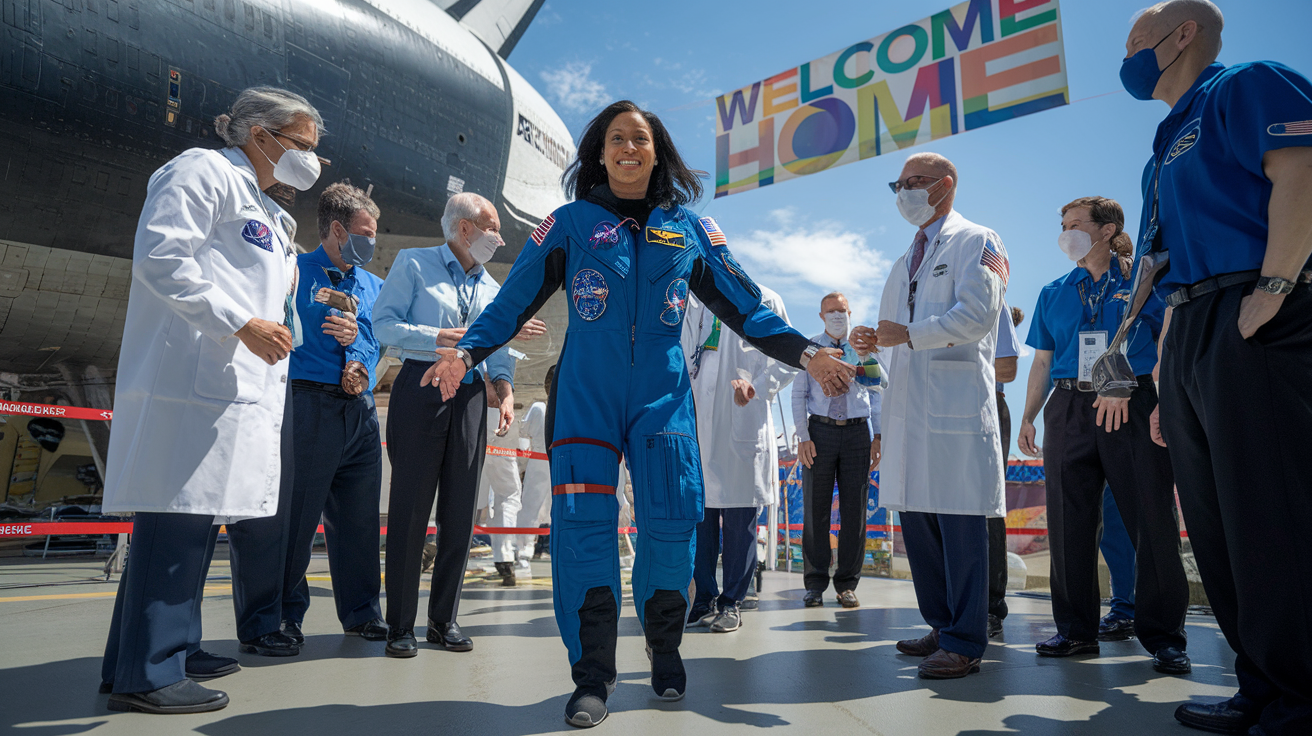
Gravity’s immediate impact
As Sunita Williams took her first steps on Earth after her long space mission, the effects of gravity were immediately apparent. The stark contrast between the microgravity environment of the International Space Station (ISS) and Earth’s gravitational pull created a unique set of challenges for the seasoned astronaut.
Upon standing, Williams experienced a sudden rush of blood to her lower extremities, a phenomenon known as orthostatic intolerance. This common occurrence among returning astronauts can lead to dizziness, lightheadedness, and, in some cases, fainting. To combat these effects, Williams wore a specially designed compression suit that helped regulate blood flow and maintain her balance.
The impact of gravity on muscle strength and bone density was also evident. After months of weightlessness, Williams’ muscles had atrophied, and her bones had lost density. This made simple tasks like walking and standing upright surprisingly difficult. NASA’s medical team closely monitored her movements, ready to assist if needed.
Witnessing Sunita’s jaw-dropping return highlights the emotional connections forged during her mission.
Here’s a breakdown of the immediate physical effects Williams experienced:
| Effect | Description | Duration |
|---|---|---|
| Orthostatic intolerance | Dizziness and lightheadedness due to blood flow changes | 1-3 days |
| Muscle weakness | Difficulty in walking and maintaining posture | 1-2 weeks |
| Balance issues | Challenges in coordination and spatial orientation | 1-3 weeks |
| Bone density loss | Increased risk of fractures and osteoporosis | Several months |
Each step she took on Earth was jaw-dropping, revealing the challenges astronauts face after prolonged space travel.
Emotional reunion with family
The emotional impact of Williams’ return was just as significant as the physical challenges she faced. As she stepped out of the spacecraft, her eyes searched the crowd for familiar faces. The moment she locked eyes with her family, a wave of emotions washed over her.
Williams’ reunion with her loved ones was a poignant reminder of the sacrifices astronauts make in pursuit of scientific discovery. The tears, hugs, and laughter shared between Williams and her family members were a testament to the strength of human connections, even across the vast distances of space.
- Tearful embraces with spouse and parents
- Joyful greetings from extended family members
- Overwhelmed by the presence of supportive colleagues and friends
Medical team’s swift response
NASA’s medical team played a crucial role in ensuring Williams’ smooth transition back to Earth. Their swift and coordinated response began the moment the spacecraft touched down.
The jaw-dropping reunion with her family underscored the emotional toll space travel has on astronauts.
The team’s first priority was to assess Williams’ vital signs and overall health status. They conducted a series of quick tests to evaluate her cardiovascular function, neurological responses, and muscle strength. This immediate health check was essential to identify any potential issues resulting from the prolonged exposure to microgravity.
Following the initial assessment, the medical team implemented a carefully planned rehabilitation program. This program included:
- Guided physical exercises to help regain muscle strength and bone density
- Balance and coordination training to readjust to Earth’s gravity
- Nutritional support to address any deficiencies developed during the space mission
- Psychological counseling to assist with the emotional aspects of reintegration
The medical team’s expertise and preparedness were critical in addressing the unique challenges faced by astronauts returning from long-duration space missions. Their swift response and comprehensive care ensured that Williams could begin her journey back to normal Earth life with the best possible support.
Surprising Physical Adaptations
Each medical assessment was conducted with jaw-dropping efficiency to ensure her swift recovery.
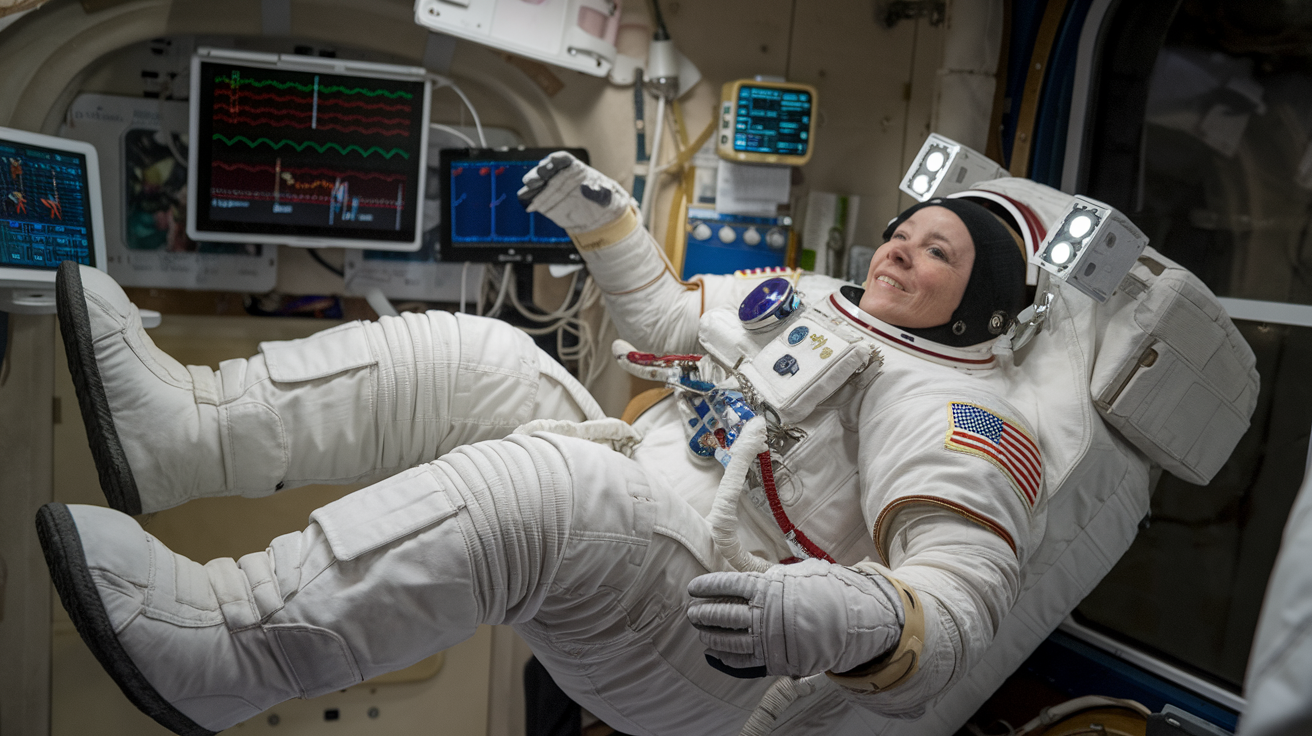
Unexpected balance challenges
After spending months in the microgravity environment of space, Sunita Williams faced some surprising physical adaptations upon her return to Earth. One of the most notable challenges was her struggle with balance. The absence of gravity in space had caused her vestibular system to adapt, leading to unexpected difficulties once back in Earth’s gravitational field.
Sunita experienced:
- Dizziness and disorientation
- Difficulty walking in a straight line
- Challenges with fine motor skills
- Temporary loss of spatial awareness
These balance issues are common among returning astronauts and highlight the profound impact of space travel on the human body. To help astronauts readjust, NASA implements a comprehensive rehabilitation program:
| Rehabilitation Activity | Purpose |
|---|---|
| Targeted exercises | Strengthen muscles and improve coordination |
| Virtual reality training | Recalibrate spatial awareness |
| Gradual exposure to movement | Reduce motion sickness and dizziness |
| Balance board exercises | Improve proprioception and stability |
Heightened sensory experiences
Interestingly, Sunita’s return to Earth wasn’t just about challenges; it also brought about some enhanced sensory experiences. After months of limited stimuli in space, her senses were suddenly bombarded with Earth’s rich environment:
- Amplified sense of smell
- Increased sensitivity to sounds
- Enhanced taste perceptions
- Heightened tactile sensations
These heightened sensory experiences, while initially overwhelming, provided valuable data for scientists studying the effects of long-term space travel on human physiology.
Rapid cardiovascular adjustments
Her jaw-dropping adaptability to gravity showcased the resilience required for returning astronauts.
Perhaps one of the most critical physical adaptations Sunita faced was the rapid cardiovascular adjustments required upon reentry. In space, the heart doesn’t have to work as hard to pump blood against gravity, leading to changes in heart size and function.
Upon return to Earth, Sunita’s cardiovascular system had to quickly readapt to pumping blood against gravity. This led to:
- Temporary drops in blood pressure
- Increased heart rate
- Feelings of lightheadedness
- Risk of fainting (orthostatic intolerance)
To mitigate these effects, NASA employs various countermeasures:
| Countermeasure | Function |
|---|---|
| Fluid loading | Increase blood volume before reentry |
| Compression garments | Support blood flow in lower body |
| Gradual increase in activity | Allow for cardiovascular readaptation |
| Monitored exercise regimen | Strengthen heart and improve circulation |
These surprising physical adaptations experienced by Sunita Williams provide crucial insights into the challenges faced by astronauts returning from long-duration space missions. Understanding and addressing these issues is vital for the future of space exploration, especially as we look towards extended missions to Mars and beyond.
Record-Breaking Achievements
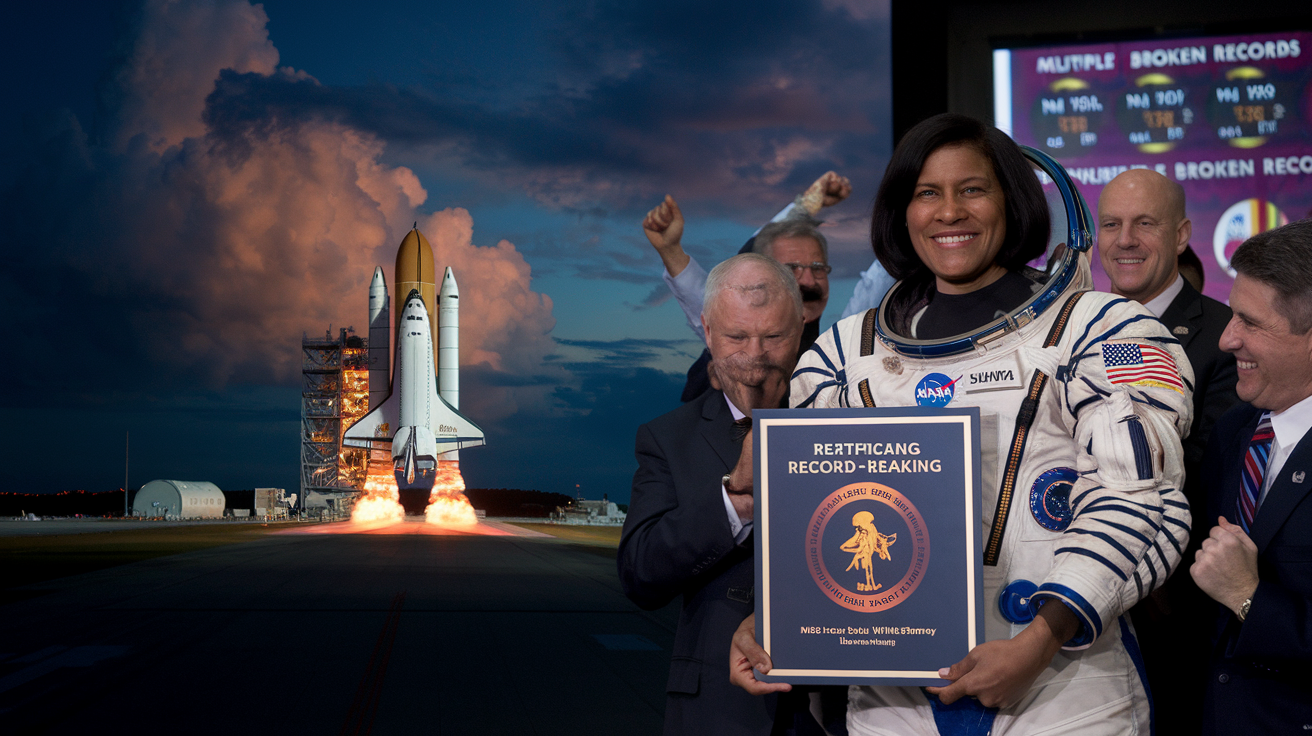
The jaw-dropping sensory adaptations she experienced upon return are scientifically fascinating.
Longest spacewalk by a woman
Sunita Williams’ return to Earth marked the end of a mission filled with extraordinary accomplishments, none more impressive than her record-breaking spacewalk. On February 4, 2007, Williams shattered the previous record for the longest spacewalk by a woman, spending an astounding 6 hours and 40 minutes outside the International Space Station (ISS). This feat not only showcased her exceptional skill and endurance, but also paved the path for future female astronauts to explore the limits of space exploration.
During this historic spacewalk, Williams and her fellow astronaut Michael Lopez-Alegria tackled critical tasks, including:
- Upgrading the ISS cooling system
- Installing new equipment for future experiments
- Conducting essential maintenance on external components
Her achievement highlighted the growing role of women in space exploration and inspired a new generation of aspiring astronauts.
Total days in space milestone
Williams’ dedication to space exploration is further exemplified by her cumulative time spent in the cosmos. By the end of her second long-duration spaceflight, she had amassed an impressive total of 322 days in space, setting a new record for female astronauts at the time. This milestone can be broken down as follows:
| Mission | Duration | Year |
|---|---|---|
| Expedition 14/15 | 195 days | 2006-2007 |
| Expedition 32/33 | 127 days | 2012 |
Sunita’s jaw-dropping cardiovascular adjustments were a crucial part of her readjustment process.
This extended time in space allowed Williams to:
- Conduct numerous scientific experiments
- Observe long-term effects of microgravity on the human body
- Contribute valuable data for future long-duration space missions
Her extensive experience in space has provided crucial insights into the challenges and opportunities of extended space travel, particularly as NASA and other space agencies plan for missions to Mars and beyond.
Number of orbits around Earth
Perhaps one of the most mind-boggling statistics from Williams’ space career is the number of orbits she completed around our planet. During her two missions, she circled the Earth a staggering 3,048 times. To put this into perspective:
- Distance covered: Approximately 71,696,000 miles (115,382,810 kilometers)
- Equivalent to: Nearly 298 trips to the Moon and back
- Average speed: 17,500 mph (28,160 km/h)
This astronomical number of orbits not only showcases the longevity of her missions but also highlights the incredible speeds at which the ISS travels. Each orbit takes about 92 minutes, meaning Williams experienced 16 sunrises and sunsets every day while in space.
These record-breaking achievements underscore Sunita Williams’ exceptional contributions to space exploration and her role in advancing our understanding of long-duration spaceflight. As we look towards future missions to distant planets, the data and experiences gathered from her time in space will prove invaluable. Next, we’ll explore the technological marvels that made these achievements possible and how they continue to shape the future of space exploration.
Technological Marvels Revealed
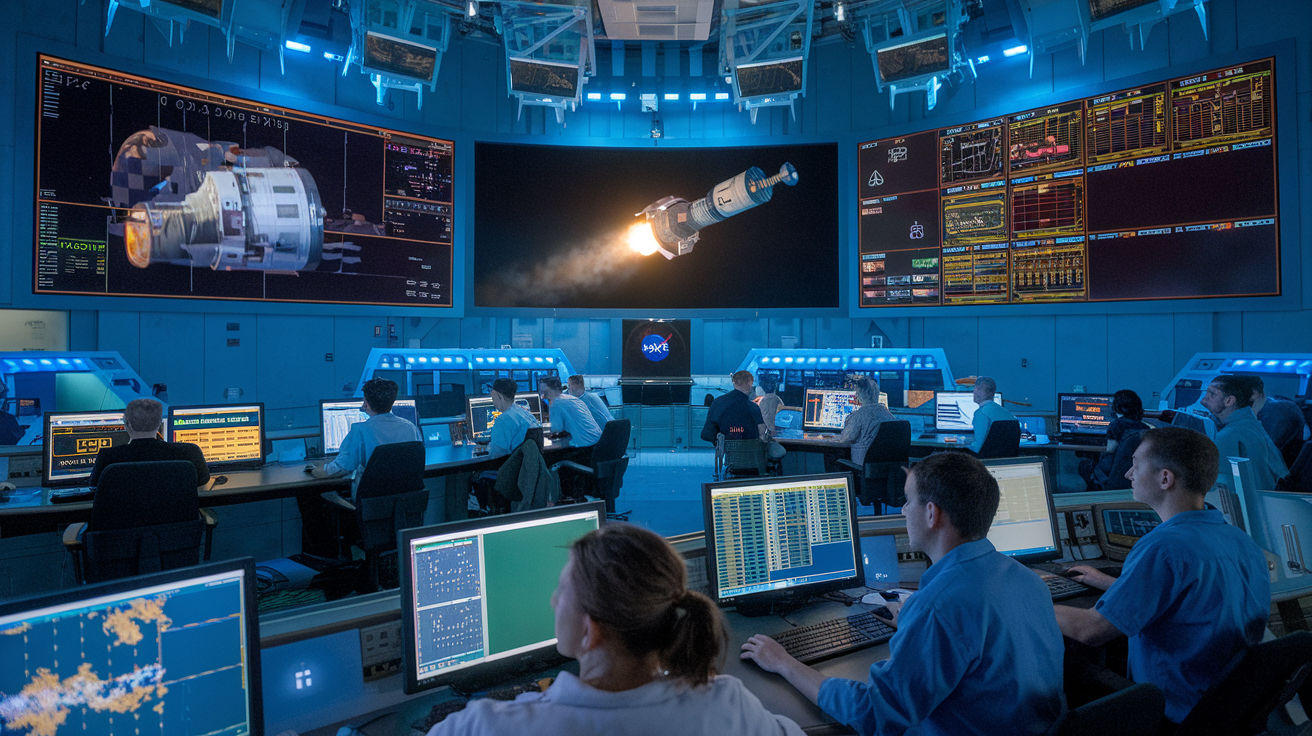
Cutting-edge spacesuit innovations
The return of Sunita Williams from space unveiled a host of technological marvels, starting with the cutting-edge spacesuit innovations. These advancements not only enhanced astronaut safety but also improved mobility and comfort during spacewalks and reentry.
One of the most notable improvements was the integration of a new liquid cooling and ventilation garment (LCVG) within the spacesuit. This system efficiently regulates body temperature, allowing astronauts to perform tasks for extended periods without overheating. The LCVG uses a network of small tubes that circulate cooled water throughout the suit, effectively dissipating heat generated by the astronaut’s body.
Another groundbreaking feature was the incorporation of smart fabrics with embedded sensors. These sensors continuously monitor vital signs, including heart rate, blood oxygen levels, and body temperature. This real-time data transmission allows ground control to closely monitor astronauts’ health during critical moments of the mission.
| Feature | Old Spacesuit | New Spacesuit |
|---|---|---|
| Weight | 310 lbs | 280 lbs |
| Mobility | Limited | Enhanced |
| Temperature Control | Basic | Advanced LCVG |
| Health Monitoring | Manual checks | Real-time sensors |
| Communication | Basic radio | Integrated smart systems |
Advanced communication systems
The successful return of Sunita Williams also showcased remarkable advancements in communication systems. These improvements ensured seamless connectivity between the spacecraft, the International Space Station (ISS), and mission control on Earth.
One of the key innovations was the implementation of a high-bandwidth, low-latency laser communication system. This technology allows for:
- Faster data transmission rates
- More reliable communication in space
- Enhanced security for sensitive information
- Reduced power consumption compared to traditional radio systems
Additionally, the mission utilized advanced noise-cancellation algorithms, significantly improving the clarity of voice communications. This technology proved crucial during the critical reentry phase, ensuring clear and uninterrupted communication between Williams and ground control.
New scientific instruments
The return mission of Sunita Williams also introduced several new scientific instruments that expanded the frontiers of space research. These tools not only contributed to the mission’s success but also paved the way for future explorations.
One of the most impressive devices was a miniaturized mass spectrometer. This compact instrument allowed for:
- On-the-spot analysis of atmospheric composition
- Detection of trace contaminants in the spacecraft’s air supply
- Studying the chemical makeup of space dust particles
Another notable addition was a high-resolution thermal imaging camera. This device provided invaluable data on:
- Heat distribution across the spacecraft during reentry
- Thermal stress on various components
- Potential weak points in the heat shield
These technological marvels revealed during Sunita Williams’ return not only ensured the mission’s success but also set new standards for future space exploration. As we continue to push the boundaries of human spaceflight, these innovations will play a crucial role in making our journeys safer, more efficient, and more scientifically productive. In the next section, we’ll explore the heartwarming encounters that awaited Williams upon her return to Earth.
Heartwarming Encounters
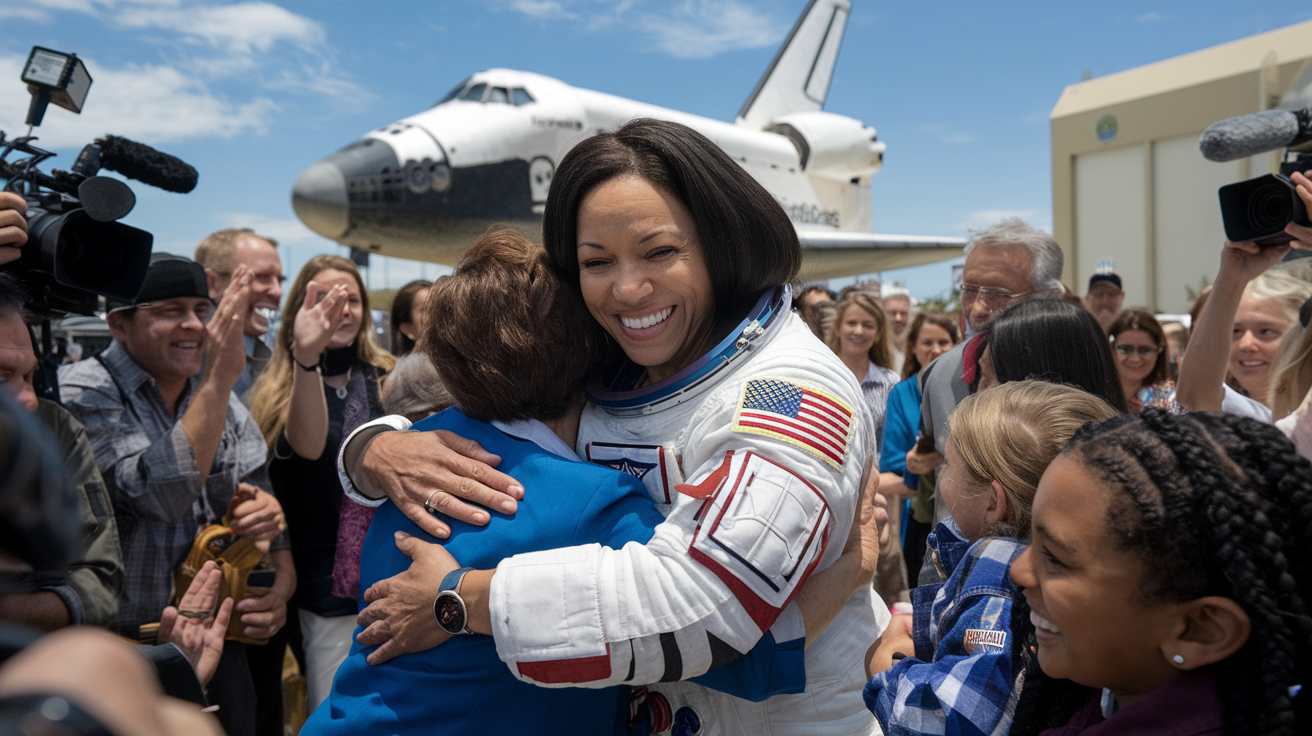
Reuniting with her dog
After months of separation, one of the most touching moments of Sunita Williams’ return was her reunion with her beloved Jack Russell terrier, Gorby. The emotional encounter perfectly exemplified the personal sacrifices astronauts make during their missions.
As Sunita approached her home, Gorby’s excited barks could be heard from a distance. The moment she stepped through the door, the small dog bounded towards her, tail wagging furiously. Sunita knelt down, arms outstretched, as Gorby leaped into her embrace. The joy on both their faces was palpable, a testament to the deep bond between humans and their animal companions.
This heartwarming reunion serves as a poignant reminder of the everyday experiences astronauts forgo during their time in space. It highlights the importance of maintaining connections with loved ones, even across the vast distances of space.
Meeting inspired young fans
Sunita’s return also provided an opportunity for her to meet with young fans who had been following her mission. These encounters were not just exciting for the children but also deeply meaningful for Sunita herself.
During a visit to a local school, Sunita was greeted by a sea of enthusiastic faces. The children, many of whom had been tracking her journey through NASA’s educational programs, were brimming with questions and admiration.
Here’s a breakdown of some of the most common topics discussed during these meetings:
| Topic | Examples of Questions |
|---|---|
| Life in Space | “How do you sleep in zero gravity?” |
| Scientific Experiments | “What was your favorite experiment on the ISS?” |
| Future of Space Travel | “Will we be able to visit Mars in our lifetime?” |
| Becoming an Astronaut | “What subjects should I study to become an astronaut?” |
These interactions not only inspired the next generation of potential astronauts and scientists but also reinvigorated Sunita’s passion for space exploration and education.
Surprise welcome from colleagues
The final heartwarming encounter came in the form of a surprise welcome from Sunita’s NASA colleagues. As she entered the Johnson Space Center for her post-mission debriefing, she was met with an unexpected celebration.
The halls were lined with fellow astronauts, mission control staff, and support personnel, all cheering and applauding as Sunita walked through. Banners congratulating her on her successful mission and record-breaking achievements hung from the ceiling.
This display of camaraderie and support underscored the collaborative nature of space exploration. It highlighted how each mission’s success is a team effort, involving not just the astronauts in space but also the dedicated professionals on the ground.
Each technological innovation she brought back was a jaw-dropping achievement in itself.
The surprise welcome also served as a moment of reflection for Sunita and her colleagues. It allowed them to collectively acknowledge the risks and challenges they face in their pursuit of scientific discovery and human achievement.
As Sunita moves forward from these heartwarming encounters, she carries with her renewed energy and inspiration. These moments of connection—with her pet, young admirers, and colleagues—serve as powerful reminders of why astronauts undertake their extraordinary journeys. They also underscore the profound impact that space exploration has, not just on scientific knowledge, but on human connections and inspiration.
Lessons for Future Missions
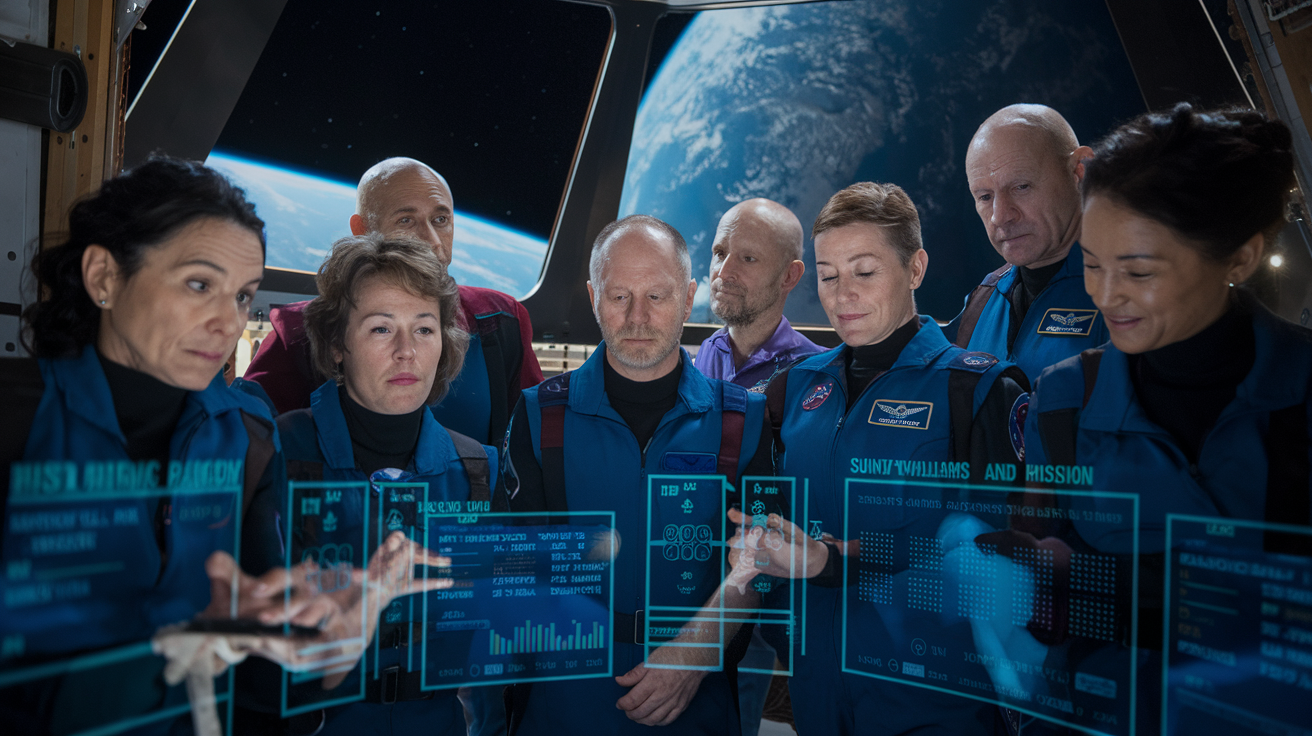
Psychological insights
As Sunita Williams’ remarkable journey came to an end, her experiences provided invaluable psychological insights for future space missions. Long-duration space travel can take a significant toll on an astronaut’s mental well-being. Williams’ resilience and adaptability offer crucial lessons for preparing future astronauts for extended missions.
One of the key psychological challenges Williams faced was the isolation from Earth and loved ones. To address this, NASA has developed new communication protocols and technologies to keep astronauts connected with their families and support networks. These advancements include:
Sunita’s jaw-dropping scientific instruments opened new avenues for research and exploration.
- Regular video calls with family members
- Virtual reality experiences of Earth environments
- AI-powered companionship systems
| Psychological Challenge | Solution Implemented |
|---|---|
| Isolation | Enhanced communication systems |
| Monotony | Virtual reality experiences |
| Lack of privacy | Redesigned living quarters |
| Team dynamics | Improved crew selection process |
Improved space-to-Earth transition protocols
Williams’ return to Earth highlighted the need for refined transition protocols. The jarring shift from microgravity to Earth’s gravity can be physically and mentally taxing. Based on her experiences, NASA has developed a comprehensive reentry program that includes:
- Gradual gravity exposure exercises
- Customized nutrition plans
- Specialized physical therapy sessions
- Psychological debriefing and support
These protocols aim to minimize the shock of reentry and facilitate a smoother readjustment to life on Earth.
Advancements in long-duration space travel
Williams’ mission provided crucial data for improving long-duration space travel. Scientists and engineers have used this information to develop new technologies and strategies, including:
- Enhanced radiation shielding materials
- More efficient life support systems
- Improved waste recycling technologies
- Advanced exercise equipment to combat muscle and bone loss
These advancements will be critical for future missions to Mars and beyond, where astronauts will need to endure even longer periods in space.
Implications for Mars missions
The lessons learned from Williams’ mission have significant implications for future Mars missions. Her experiences have helped NASA refine its approach to preparing astronauts for the challenges of interplanetary travel. Some key considerations for Mars missions include:
- Psychological screening and training for extended isolation
- Development of autonomous medical systems for emergencies
- Creation of self-sustaining habitats for long-term planetary stays
- Improved propulsion technologies for faster travel times
The heartwarming encounters were equally jaw-dropping, showcasing the human side of space travel.
As we look towards the next frontier of space exploration, the insights gained from Sunita Williams’ return will play a crucial role in shaping our approach to human spaceflight. Her journey has not only pushed the boundaries of what we thought possible but has also paved the way for future generations of astronauts to venture even further into the cosmos.

Sunita’s joyful reunion with Gorby was a jaw-dropping reminder of the personal sacrifices made in space.
Sunita Williams’ extraordinary return to Earth was filled with awe-inspiring moments that captivated the world. From her daring descent through the atmosphere to her first wobbly steps on solid ground, each stage of her journey revealed the incredible resilience of the human body and spirit. Her record-breaking achievements and the technological marvels she brought back with her serve as testaments to the boundless possibilities of space exploration.
Each jaw-dropping experience adds depth to our understanding of space travel.
As we reflect on Williams’ remarkable voyage, we are reminded of the vital role astronauts play in advancing our understanding of the cosmos and our place within it. Her experiences, from the physical adaptations she underwent to the heartwarming encounters upon her return, offer invaluable insights for future missions. Let Sunita Williams’ journey inspire us all to reach for the stars and embrace the wonders that lie beyond our planet’s atmosphere.
Parenting with Children: 7 Inspiring Secrets for Joyful
Meeting her young fans was a jaw-dropping experience for them and for Sunita, inspiring the next generation.
These jaw-dropping advancements in space travel are critical for future missions to distant planets.
NASA continues to learn from her jaw-dropping experiences in space.
The implications of her jaw-dropping experiences will shape our approach to Mars missions.
The enthusiasm of her colleagues during the surprise welcome was nothing short of jaw-dropping.
These jaw-dropping moments reflect the collaborative spirit among the team working towards space exploration.
Sunita’s journey serves as a jaw-dropping reminder of the human spirit’s resilience and curiosity.
Her jaw-dropping achievements will inspire countless others to pursue careers in space science.
Let us celebrate these jaw-dropping moments as we continue to advance into the final frontier.
As we reflect on her journey, the jaw-dropping moments offer insight into human potential.
Share this content:

[…] “7 Jaw-Dropping Moments from Sunita Williams’ Return” […]